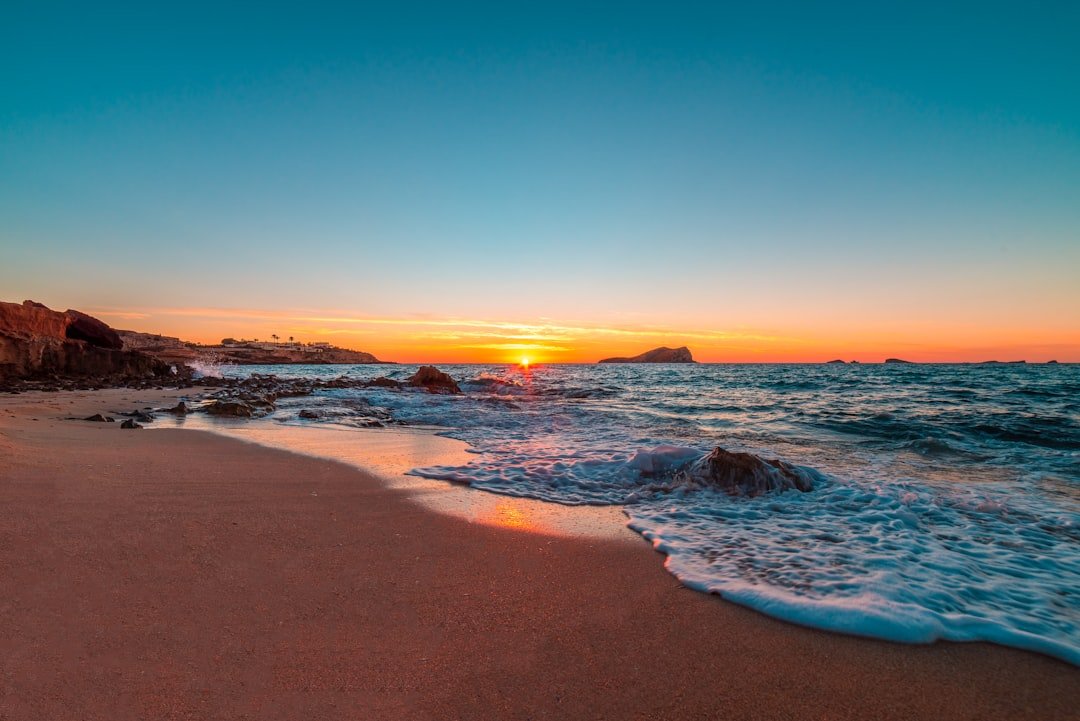Recognizing Cabo Water Temperature When you picture Cabo San Lucas, you probably picture beaches bathed in sunlight & pristine waters. Swimming, snorkeling, and fishing are all impacted by Cabo’s water temperature, which is a key component of its appeal. Cabo’s ocean temperatures typically range from a cool 60°F (15°C) in the winter to a scorching 85°F (29°C) in the summer. Check out the latest Nevada Events at Nevada Events.
Key Takeaways
- Water temperature in Cabo can range from 70°F in the winter to 85°F in the summer, making it an ideal destination for water activities year-round.
- Factors affecting Cabo’s water temperature include ocean currents, air temperature, and proximity to the equator, resulting in warm waters and comfortable swimming conditions.
- The best times to visit Cabo for ideal water temperatures are in the spring and fall, when the water is warm but not too hot, perfect for swimming, snorkeling, and diving.
- Activities to enjoy based on Cabo’s water temperature include swimming, snorkeling, scuba diving, and fishing, with the warm waters providing a comfortable environment for marine exploration.
- To prepare for Cabo’s water temperature, pack sunscreen, swimwear, and water shoes, and consider renting or bringing snorkeling and diving gear to fully enjoy the warm waters.
Because of this range, both beachgoers and fans of water sports can visit Cabo all year round. Planning your activities requires an understanding of the water’s temperature. Knowing the temperature will help you determine whether you can enjoy the water in your swimsuit or if you need a wetsuit if you plan to dive into the ocean. Swimming and other water sports are most enjoyable during the warmest months, which are usually June through October. The water is still reasonably pleasant, though, even in the cooler months, making for year-round fun.
The temperature of the water in Cabo is influenced by a number of variables, which makes it a dynamic environment. The geographic location of Cabo San Lucas is one of the main factors. Cabo is located at the southernmost point of the Baja California Peninsula and is encircled by the Sea of Cortez & the Pacific Ocean.
Because of this special location, ocean currents have a big influence on water temperature. During some seasons of the year, cooler waters may be brought by the California Current, which runs south along the coast. Also, seasonal variations have a big influence on water temperatures.
| Month | Water Temperature (°F) |
|---|---|
| January | 68-70 |
| February | 67-69 |
| March | 67-69 |
| April | 68-70 |
| May | 70-72 |
| June | 72-74 |
| July | 73-75 |
| August | 74-76 |
| September | 74-76 |
| October | 73-75 |
| November | 71-73 |
| December | 69-71 |
The ocean surface is heated by warmer air temperatures during the summer, raising the water’s temperature.
Variations in the temperature of the water are also influenced by regional weather patterns like wind & precipitation. By being aware of these elements, you can maximize your time in Cabo and plan your trip more effectively.
The Best Times to Go to Cabo for the Best Water Temperatures If you want to enjoy the best beach experience in Cabo, you need to plan your trip carefully. June through October are usually the best months for the best water temperatures. The ocean will be at its warmest during this time, which makes it ideal for water sports like swimming and snorkeling. Expect busy beaches and resorts during the summer, which also happens to be the busiest travel season. Visit in late spring or early fall, though, if you want a more sedate experience with still pleasant water temperatures. A sweet spot is frequently found in May & November, when there are fewer people but the water is still warm enough for swimming.
With this timing, you can take advantage of everything Cabo has to offer without feeling overrun by tourists. Knowing these seasonal trends will make your trip more enjoyable no matter when you decide to go. Activities to Enjoy Depending on the Water Temperature in Cabo A variety of activities catered to your tastes are available in Cabo due to the water’s varied temperatures. A range of water sports, including jet skiing, paddleboarding, & parasailing, are available to you during the warmer months. It is simple to enjoy these exhilarating activities for hours on end without feeling cold or uncomfortable thanks to the welcoming waters.
On the other hand, you might want to look into other options that still let you enjoy Cabo’s breathtaking coastline during the cooler months. Since many marine species remain active even in cooler water, diving and snorkeling are great options. Also, you can benefit from boat tours that keep you warm and dry while providing stunning views of the famous Arch of Cabo San Lucas.
There are plenty of things to do all year round to keep you occupied and amused. How to Prepare for Cabo’s Water Temperature: To fully enjoy Cabo’s waters, preparation is essential. Before you travel, make sure to check the ocean temperature and local weather forecast.
This knowledge will assist you in packing properly. Bring a lightweight wetsuit or rash guard if you’re going in the cooler months so you can stay warm while swimming or snorkeling. Don’t overlook necessities like hydration supplies and sunscreen, either. In Cabo, the sun can be very strong, particularly during the hottest summer months when the water is at its warmest.
Maintaining energy levels while engaging in outdoor activities requires drinking plenty of water. You can guarantee a more pleasurable & cozy experience by being sufficiently prepared for the water temperature in Cabo. Useful Advice for Optimizing Cabo’s Water Temperature Take into account these helpful hints to make the most of your trip there based on the water temperature. Plan your activities first to avoid the hottest periods of the day. If you’re interested in diving or snorkeling, for example, schedule your trip for mid-morning, when calmer waters tend to provide the best visibility.
The beach can also be more tranquil in the early morning or late afternoon. Another piece of advice is to investigate various beaches according to their distinctive features. Because of their location or the surrounding terrain, certain beaches may have warmer waters. For instance, Medano Beach is well-known for its vibrant ambiance and warmer waters, which make it a great place to swim and mingle. Due to its closeness to open ocean currents, Lover’s Beach, on the other hand, may have somewhat cooler waters despite providing a more serene environment with breathtaking views.
During your visit, you will make enduring memories by varying your beach experiences according to the water temperature. Local Marine Life and Water Temperature The waters of Cabo are brimming with dynamic marine life that flourishes in a range of temperatures all year long. Many species, including sea turtles, dolphins, & vibrant tropical fish, are drawn to the warm waters in the summer. The underwater spectacle that unfolds before you will delight you if you are an avid diver or snorkeler. Conversely, the cooler months highlight distinct marine life.
From December to April, migratory species such as humpback whales can be seen as they pass through these waters in order to mate and give birth. This seasonal occurrence provides a rare chance to go on whale watching excursions and get up close and personal with these magnificent animals. Your appreciation of Cabo’s natural beauty can be improved by knowing how the local marine life affects the water’s temperature.
Adopting sustainable practices that preserve this stunning environment is crucial if you want to take advantage of everything Cabo has to offer in terms of marine life and water temperature. Selecting environmentally conscious tour companies that place a high priority on conservation initiatives is one way to achieve this. Seek out businesses that minimize their impact on delicate ecosystems by using responsible diving and snorkeling techniques. While enjoying the beaches and ocean activities, also be mindful of how you dispose of your waste. To lessen the amount of plastic waste that can endanger marine life, always bring reusable containers for snacks and beverages.
Learning about regional conservation efforts can also improve your trip; numerous groups provide chances for tourists to take part in marine conservation projects or beach clean-ups. In addition to improving your personal experience, adopting sustainable practices while visiting Cabo San Lucas helps to protect this breathtaking location for coming generations. Your efforts can help preserve the fragile equilibrium of Cabo’s marine ecosystems and guarantee that its waters will continue to be attractive for many years to come. To sum up, knowing the water temperature in Cabo is crucial to making the most of your time there. You can take advantage of all that Cabo has to offer while honoring its natural beauty by taking into account variables that affect temperature swings, scheduling your trip around optimal conditions, & adopting sustainable practices.
Your trip to Cabo will surely be remembered, whether you choose to swim in the warm waters or take in the local marine life in the cooler months.
If you are planning a trip to Cabo San Lucas and are curious about the water temperature, you may want to check out this article on Cabo Adventures. This article provides valuable information on the average water temperatures in Cabo throughout the year, helping you plan your activities accordingly. Additionally, you can also read about the best times to visit Cabo for optimal water temperatures and weather conditions in this related article. Happy travels!
FAQs
What is the average water temperature in Cabo?
The average water temperature in Cabo San Lucas ranges from 70°F (21°C) in the winter to 85°F (29°C) in the summer.
When is the best time to visit Cabo for warm water temperatures?
The best time to visit Cabo for warm water temperatures is during the summer months, from June to September, when the water temperature is around 85°F (29°C).
What activities can I enjoy in Cabo’s warm waters?
Visitors to Cabo can enjoy a variety of water activities in the warm waters, including swimming, snorkeling, scuba diving, and fishing.
Are there any factors that can affect the water temperature in Cabo?
The water temperature in Cabo can be affected by factors such as ocean currents, weather patterns, and seasonal changes.
Where can I find up-to-date information on Cabo’s water temperature?
Up-to-date information on Cabo’s water temperature can be found through local weather websites, marine forecast services, and tourism websites.



